Introduction:There are at least 2 species of Magnificent spider. The Bolas spider is one of them. The female is 12mm long while the male is 2mm. The Magnificent spider is known also as the Angler spider.The Magnificent Spider, as one of the Bolas spider group, has evolved a highly sophisticated way of capturing prey using a single line of sticky silk to capture moths.
This spider is part of a family (the Mastophoreae) within the orb-weaving spider family (Araneidae) that no longer build an orb web, but instead attract their prey of male moths by chemical mimicry.
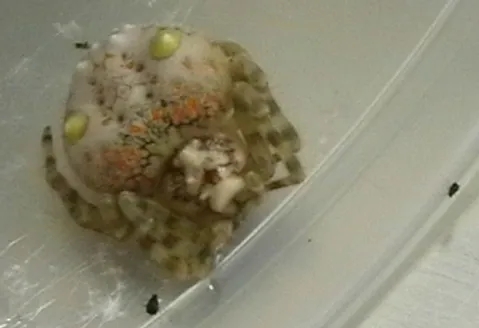
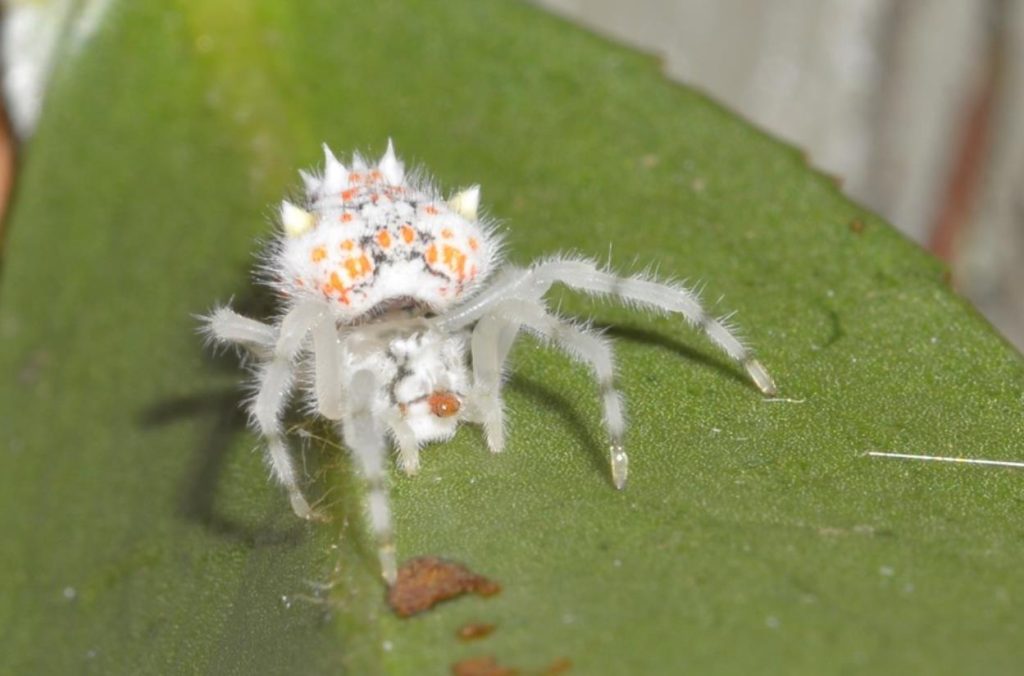
Ordgarius magnificus, the magnificent spider , is a bolas spider in the family Araneidae.[1] It is endemic to forests along the Australian east coast.
Females are up to 14 mm long and almost as wide; males reach only 2 mm. Females are creamy-white with a pattern of pink and yellow spots on the abdomen, and a crown of white and reddish tubercles on the head.
There are three species of Bolas spider found in eastern Australia: The Magnificent Spider, Ordgarius magnificus, O. furcatus, and O. monstrosus.
The female Magnificent Spider is very distinctive in its markings. It is white with two bright yellow knobs on its abdomen, and a number of salmon-coloured spots and blotches as well. The body and limbs are covered with long fine hairs, especially the forelegs.
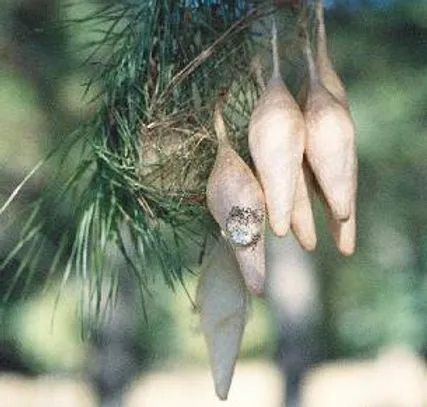
Your Guide to the Magnificent Spider
Appearance
The female Magnificent spider has the following identifying characteristics:
Creamy white body and legs that are covered in long fine hairs
Two bright yellow knobs on its abdomen, and a series of salmon-coloured spots and blotches
Magnificent Spider Size ranging from 14 mm – 25 mm
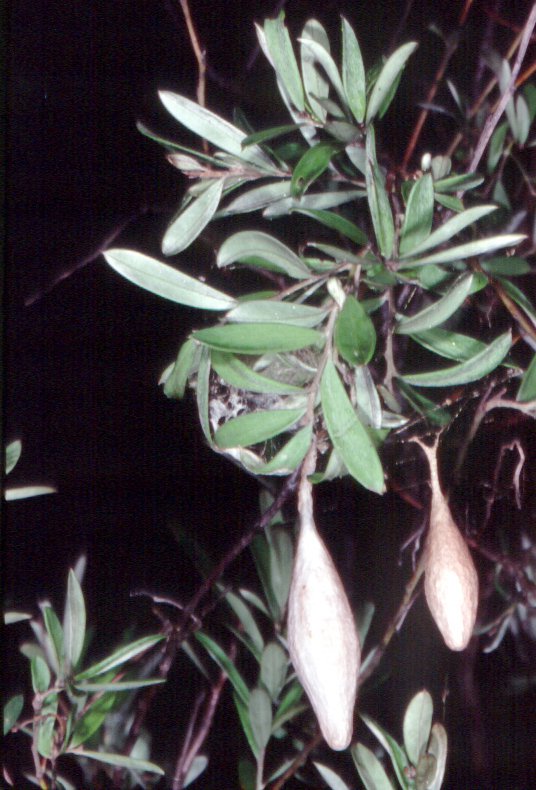
The female Magnificent Spider is about two cm long whilst the tiny male is only 1.5 millimetres in length. The female has very distinctive markings with two bright yellow knobs on her white abdomen. There are also salmon-coloured spots and blotches on her body. Fine, long hairs cover legs and body.
These spiders are quite amazing. They catch their prey by creating a line of silk with a sticky blob on the end, then swinging it round and round. They emit the pheromones of some female moths to attract the male moths within range of their bolas, catching the moths rather like the Incas hunted game, and the Gauchos of Argentina catch their cattle.
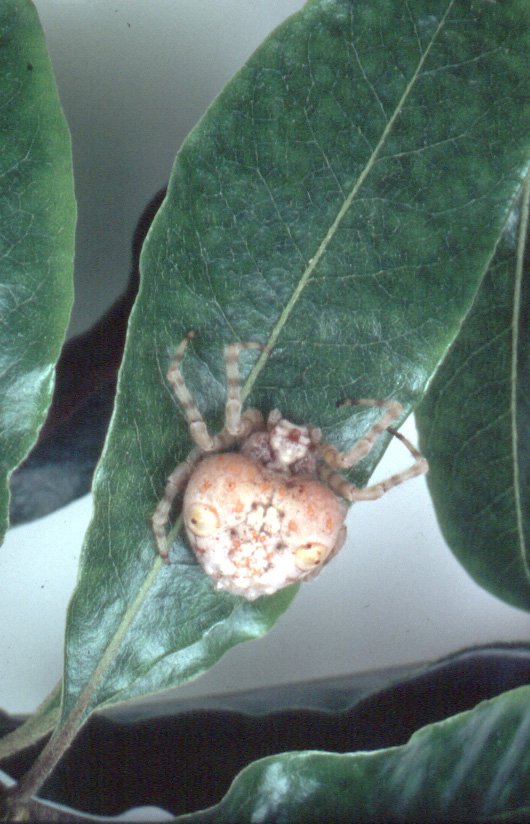
Feeding and behaviours
Like other bolas spiders, the Magnificent spider uses deception to capture its preferred prey – moths.
At night, the Magnificent spider spins a short line of silk with a sticky globule, or bolas, at the free end.
This globule may emit an airborne pheromone that imitates the scent of female moths belonging to the Noctuidae family, thereby attracting male moths of the same genealogy.
The Magnificent spider has vibration sensitive hairs on its legs. As such, when it senses the approach of a moth in flight, it twirls the silken thread and swings the globule around until it hits the moth.
It then hauls the moth up and bites and immobilises it, either to eat it immediately or stow it away for safekeeping.
Female Magnificent spiders also use their spinnerets to construct brown, spindle shaped egg sacs that can be up to 5 cm long and house roughly 600 eggs.
Habitat:
The Odgarius Magnificus is found in N.S.W., Qld, Tasmania, South Australia and Victoria. At daytime, it retreats to a home made of leaves bound together with silk. They live in the foliage of native trees and shrubs such as eucalyptus, which are usually a few metres from the ground. The Magnificent spider has adapted well to urban situations.
They live in trees or tall shrubs, rarely less than 2 m above the ground. The easiest way to find them is to search for clusters of large, brown egg-sacs suspended among foliage; the spider will be found nearby, at day sheltering in a retreat made from rolled leaves and silk.
Like all bolas spiders, the female attracts male moths with an airborne pheromone. Once a moth approaches, the spider senses it coming due to vibration sensitive hairs on its outstretched legs. It is then caught with a sticky globule that is swung at the prey.
The egg-sacs are up to 5 cm long; one spider produces up to nine sacs per season, each with several hundred eggs.
During the day, the Magnificent Spider hides in a retreat made by binding leaves together with silk. Preferred trees include natives such as eucalypts in dry or wet sclerophyll forests, but these spiders are also found in suburban gardens. Often the spider’s characteristic spindle-shaped egg sacs are hanging near the retreat.
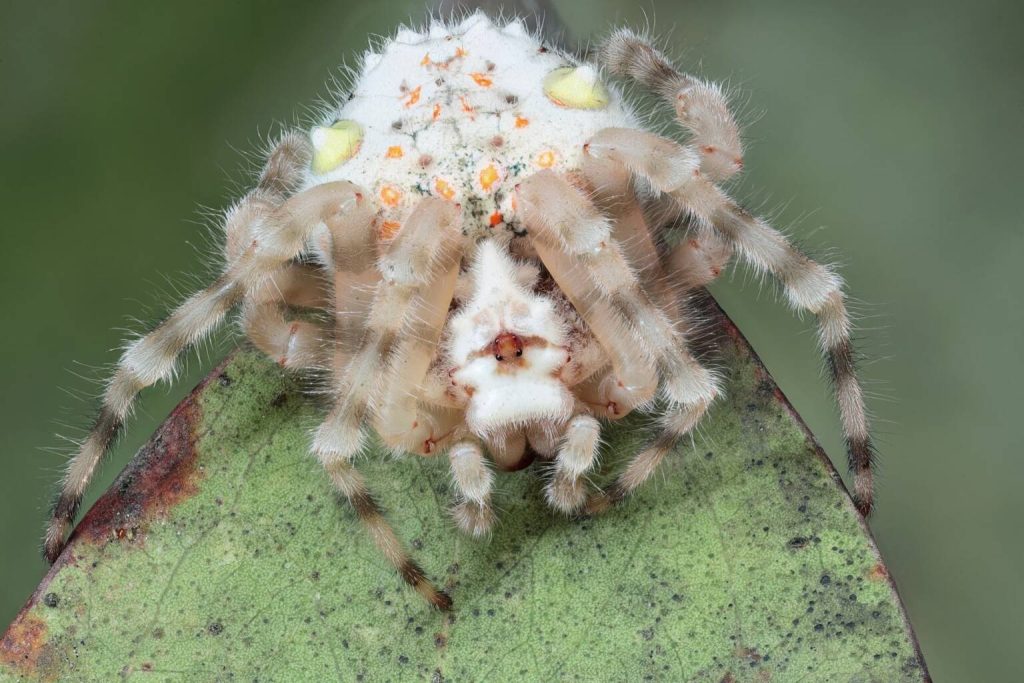
Appearance:
The female measures up to 14mm long (25mm when pregnant) and the male is hardly able to be seen at a mere 1.5-2mm. The species is basically white, except for its abdomen which has two small, bright nodules and numerous tiny salmon coloured star-shaped patterns. The body and limbs are covered with lots of fine hairs that are particularly long on its forelegs.
Prey:
The female Magnificent Spider has a special scent to attract male moths. Once the Moth is within “fishing range” it throws the sticky thread. The bolas is a sticky ball of glue and silk attached to the end of the silk thread.
Breeding: The Magnificent spider produces about 6-7 long papery egg sacs. The egg sacs will always be near the female. These take around 3 months to hatch. When they hatch, the female never leaves her young alone. Even at hunting time.
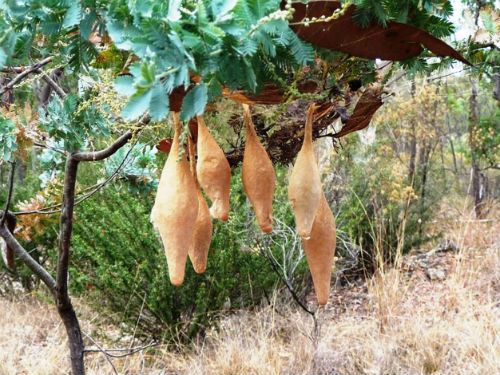
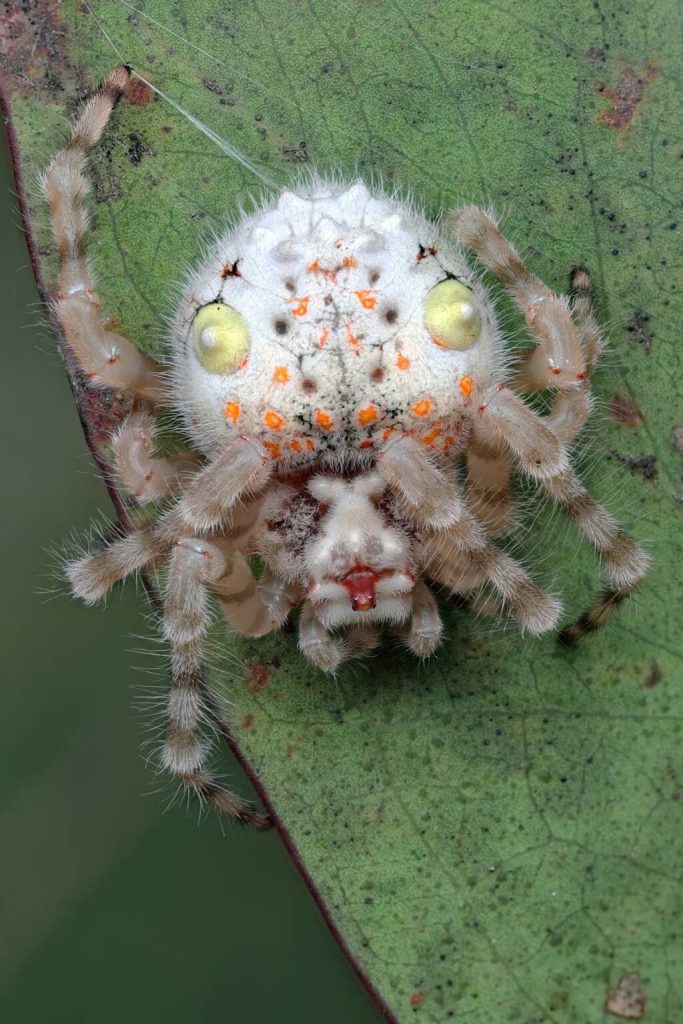
Feeding and diet
Bolas spiders capture their prey by deception. At night the Magnificent Spider spins a short line of silk with a sticky globule of silk at the free end – the bolas (named after a South American throwing weapon made of rope and weights). This sticky silk globule may contain pheromones that mimic the scent of a certain female noctuid moth species, attracting unwary male moths within range (known as ‘aggressive mimicry’). The Magnificent Spider is very sensitive to vibrations, twirling its thread when it senses the approach of a moth’s beating wings. The moth eventually flutters close enough to be hit by and become stuck to the globule. The spider then pulls up the strand, bites and immobilises the moth, and either eats it straight away or stores it for later, wrapped in silk. These spiders can also be induced to respond to the vibrations of plucked guitar strings.
Life history cycle
Very little is known about the courtship and mating of Magnificent Spiders, but once egg development starts, the female’s abdomen swells up quite remarkably. She constructs a series of spindle-shaped egg sacs over several nights, and each one is filled with about 600 eggs. The egg sacs are attached to a branch, and may number up to seven. They are often parasitised by wasps and flies.
The mother spider usually dies off over winter. The baby spiders emerge in late winter to early spring and disperse by ballooning.
